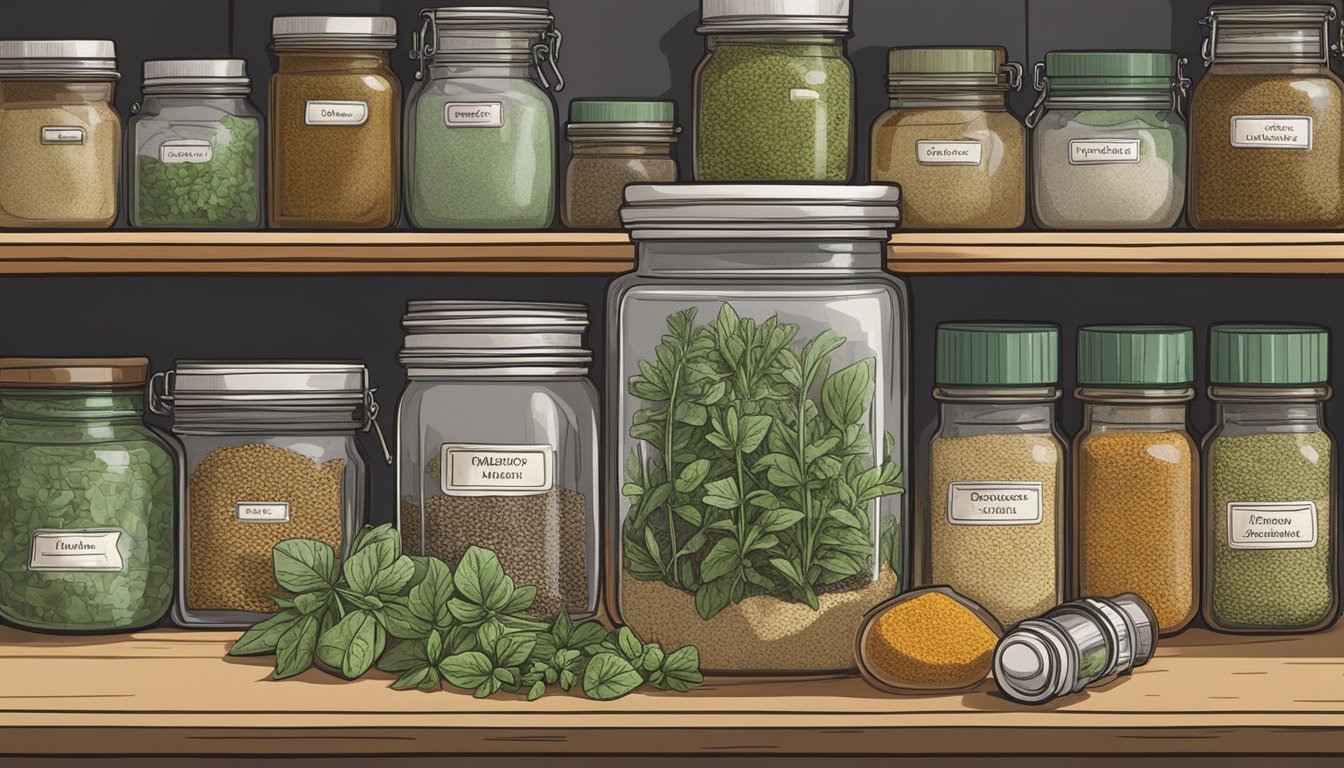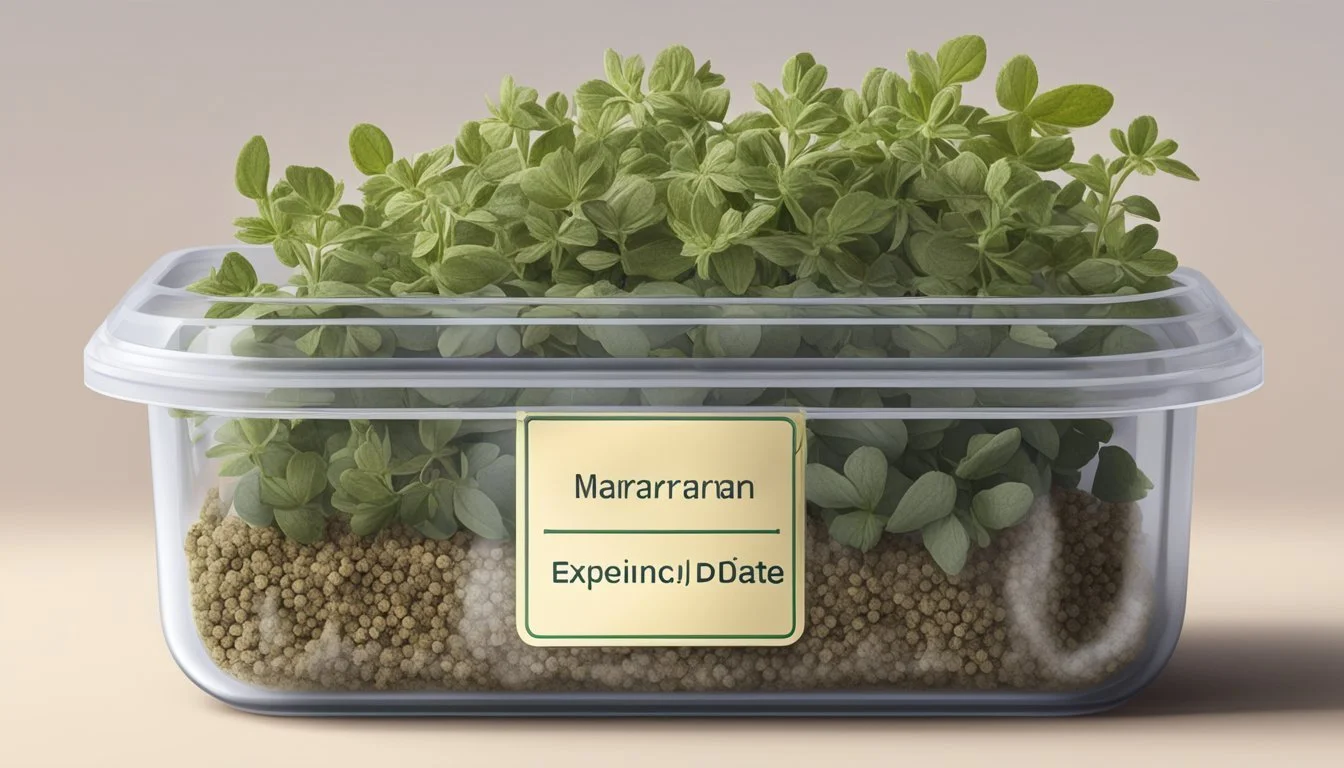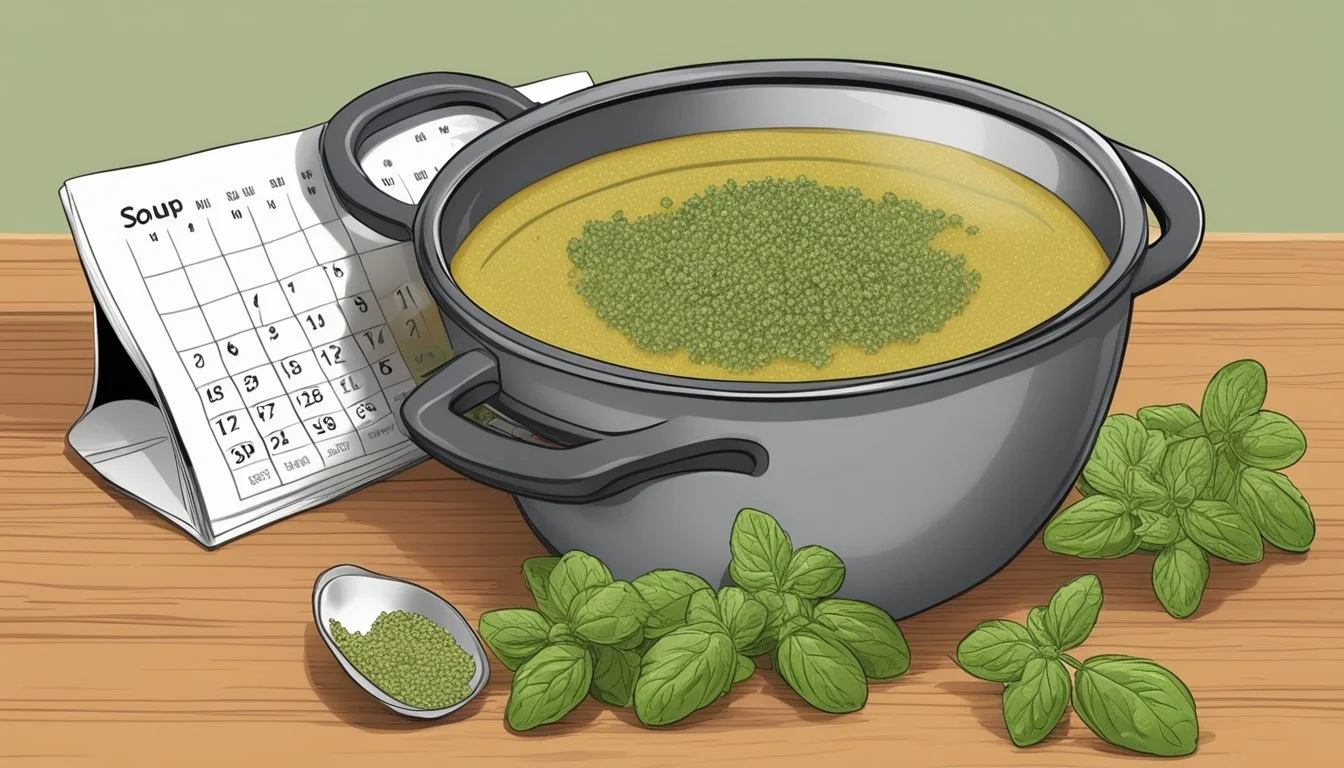How Long Does Dried Marjoram Last?
Understanding Shelf Life and Storage Tips
Dried marjoram is a versatile herb commonly used in various cuisines for its warm, sweet flavor similar to oregano but with a hint of balsam. Understanding the shelf life of dried marjoram is essential for culinary enthusiasts and professional chefs alike, as it determines how long this spice can retain its desirable qualities. Typically, dried marjoram, when stored correctly, will maintain its best quality for about one to three years.
The key to prolonging its shelf life lies in the storage method. Dried marjoram should be kept in an airtight container to prevent exposure to moisture and air, which can degrade its flavor and potency over time. Storing it in a cool, dry, and dark place away from heat sources further ensures that it remains aromatic and flavorful. While it's often safe to use dried marjoram past the date marked on the package, its quality may diminish, making it less impactful in recipes.
Understanding Marjoram
Marjoram is a culinary and aromatic herb from the mint family, valued for its sweet and citrusy flavor.
Origins and Varieties
Marjoram, scientifically known as Origanum majorana, is native to the Mediterranean region and Western Asia. It is often confused with oregano, although they carry distinct flavors and are employed differently in cooking. Marjoram is a tender perennial plant growing in the mild climates of the Mediterranean, where it thrives in well-drained soil and with plenty of sunlight.
Commonly encountered varieties of marjoram include sweet marjoram and knotted marjoram, the latter marked by the "knots" or small knobby flowers at the tip of its stems. Other regional varieties of marjoram may exhibit slight differences in flavor, aroma, and appearance based on their local growing conditions and cultivars.
Marjoram vs. Oregano
While both marjoram and oregano belong to the Origanum genus, they are different in species and flavor profile. Marjoram is Origanum majorana, a delicate herb with a sweet, floral, and woodsy flavor, while oregano, also known as wild marjoram, is Origanum vulgare, which possesses a stronger, more peppery and earthy taste.
Marjoram (Origanum majorana)
Sweet, floral, woodsy flavor
Used in lighter dishes like soups and salads
Delicate leaves, less resistant to extended cooking
Oregano (Origanum vulgare)
Strong, peppery, earthy flavor
Common in robust dishes such as pizza and pasta sauces
Hardier leaves, suitable for long cooking times
The distinction is significant in culinary use; while one can substitute marjoram for oregano, it is done cautiously due to the latter's more potent flavor which can dominate a dish not initially meant for it.
Dried Marjoram Properties
Dried marjoram is known for its subtler flavor compared to oregano and has a unique aromatic profile. It holds a variety of nutritional benefits, including antioxidants and anti-inflammatory properties.
Flavor Profile
Dried marjoram has a milder flavor than oregano, often described as slightly sweet with a hint of citrus. Unlike its fresh counterpart, when marjoram is dried, the flavors become more concentrated but are still best used in moderation to avoid overwhelming a dish.
Aroma Characteristics
The aroma of dried marjoram is herbaceous and woody, with a warm and slightly sharp quality. Its subtle and inviting scent complements a wide range of dishes, making it a versatile herb in many culinary traditions.
Nutritional Benefits
Antioxidants: Dried marjoram is a good source of antioxidants, which can help protect the body from oxidative stress and may contribute to overall health.
Anti-inflammatory properties: Regular inclusion of marjoram in the diet may offer anti-inflammatory benefits, potentially aiding in the reduction of inflammation in the body.
Marjoram's properties make it not just a culinary delight but also a potential contributor to a healthy diet.
Proper Storage Techniques
To maintain the quality and extend the shelf life of dried marjoram, it's essential to focus on proper storage techniques, primarily involving the choice of container and the storage environment.
Choosing the Right Container
One should store dried marjoram in an airtight container to prevent exposure to air and moisture, which can degrade the herb's quality. Containers with tight-fitting lids are ideal because they minimize the entrance of air and humidity that can lead to stale or moldy marjoram.
Ideal Storage Conditions
Dried marjoram thrives in a cool, dry place, away from fluctuating temperatures and humidity. A pantry, cupboard, or drawer away from heat sources like stoves and direct sunlight is preferable. Keeping the temperature consistent and avoiding areas with high humidity or excessive ventilation also helps preserve its flavor and potency.
Maximizing Shelf Life
To maintain the flavor and potency of dried marjoram, one needs to control several environmental factors. Proper storage methods can keep dried marjoram at best quality for one to three years.
Factors Affecting Longevity
Shelf Life: The shelf life of dried marjoram can span from one to three years. Factors that can negatively affect this duration include exposure to heat, light, and moisture, which could reduce the herb's quality and potency.
Heat: Store dried marjoram leaves away from direct sunlight and heat sources to prevent the loss of essential oils and flavor.
Moisture: Ensure that dried marjoram is kept in a moisture-free environment to avoid mold growth and spoilage. Use air-tight containers to create a barrier against humidity.
Storage Containers: Choose containers with tight-fitting lids to shield dried marjoram from air exposure that can diminish its quality over time.
Signs of Deterioration
Color Fading: Original green color that starts to fade can indicate a loss of quality.
Aroma Loss: A weakened scent is a clear sign that the dried marjoram is losing its potency.
Mold Presence: Any signs of mold or a musty odor suggest that moisture has compromised the herb and it should be discarded.
Texture Changes: Dried marjoram leaves should be crisp. If they feel spongy or moist, they may have absorbed excess moisture, leading to spoilage.
Using Dried Marjoram in Cooking
Dried marjoram is a versatile and aromatic herb that enhances a variety of dishes with its slightly sweet and savory flavor profile. It is a popular ingredient in many cuisines and can be incorporated at different stages of the cooking process.
Culinary Applications
Dried marjoram is frequently added to meat dishes, including those that feature poultry, due to its ability to complement and bring out the natural flavors of the meat. It's also well-suited for vegetable dishes, where its mild, oregano-like flavor can enhance the overall taste without overwhelming the palate. Incorporating dried marjoram into salads and salad dressings can introduce a subtle, earthy note. Stews and soups are also common recipes that benefit from the addition of marjoram as it contributes to a complex seasoning blend.
Recipe Idea: Sprinkle dried marjoram over roasted vegetables to add depth to the flavor.
Salad Dressing Tip: Whisk together olive oil, lemon juice, minced garlic, and dried marjoram for a simple yet flavorful dressing.
Creating Flavorful Blends
Dried marjoram plays a significant role in herb mixtures, such as Herbes de Provence and poultry seasoning, where it combines with other herbs like sage, thyme, and basil (how long does basil last?) to create a balanced and fragrant blend. The key to maximizing its potential in seasoning blends is to use it in amounts that harmonize with the other ingredients rather than dominate the flavor profile.
Herbes de Provence Example: Mix equal parts of dried marjoram, thyme, basil, and rosemary, adjusting to taste.
Substitutes for Marjoram
In cases where marjoram is not available, several other herbs can serve as a substitute. Sage and thyme are potential replacements, offering a similar earthy and slightly minty flavor. Basil can be used as a marjoram substitute, especially in tomato-based dishes. However, cooks should be mindful of the substitution ratios because these alternatives can have more robust flavors.
Substitution Ratio: Start with half the amount of sage or thyme when replacing marjoram and adjust to taste.
Harvesting and Drying Process
The longevity of dried marjoram depends on the efficacy of the drying process and proper harvesting. A meticulous approach can lead to a shelf life up to three years.
Methods of Drying Marjoram
There are several tried and true methods for drying marjoram; the foremost among these are air-drying, oven-drying, and using a food dehydrator. Each method affects the dryness and quality of the herb differently:
Air-Drying: Gather marjoram in small bundles and hang them upside-down in a warm, dry, and well-ventilated space away from direct sunlight. This method retains flavor but may take longer.
Oven-Drying: Spread marjoram leaves on a baking sheet, ensuring they do not overlap, and dry them in an oven set to the lowest possible temperature. Monitor closely to prevent burning.
Food Dehydrator: This appliance is designed to dry herbs uniformly. Spread out leaves on trays in a single layer, set to the herb setting or around 95°F, until leaves become brittle.
Home Drying Tips
When drying marjoram at home:
Preparation: Prioritize fresh leaves for drying, choosing those harvested on a dry day, preferably in the morning after dew has evaporated.
Consistency: Ensure that leaves are evenly spread to prevent clumping and to facilitate uniform drying.
Attention: Regardless of the method, it is crucial to routinely check the marjoram as it dries. Leaves must be dehydrated until brittle to the touch but not to the point of discoloration.
Storage: After drying, separate the brittle leaves from the stems and store the marjoram in an airtight container in a cool, dark place.
Health Benefits and Uses
Marjoram is not only esteemed for its culinary versatility but also for its therapeutic properties. It has a rich history in traditional remedies, particularly in regions like North Africa.
Digestive Aid
Marjoram is traditionally used to support the digestive system. It can help alleviate symptoms of indigestion, soothe upset stomachs, and is often utilized as a remedy for painful menstruation due to its antispasmodic qualities.
Improves Digestion: Regular incorporation of marjoram in meals may promote better digestive health.
Menstrual Relief: Its antispasmodic effects can help in reducing discomfort during menstrual cycles.
Anti-inflammatory and Antimicrobial
The herb's benefits extend to its anti-inflammatory and antimicrobial properties. These qualities make marjoram a potent ally in fighting inflammations and infections.
Fights Inflammation: Marjoram contains compounds that have been shown to reduce inflammation in the body.
Combats Microbial Infections: Its antimicrobial properties help in preventing and treating infections.
By incorporating marjoram into one’s diet or health regimen, it offers a natural means to support various bodily functions and maintain well-being.
Purchasing and Replacing Marjoram
When it comes to marjoram, understanding its shelf life and proper storage methods are crucial for maintaining potency and quality. This section guides consumers on when to replace their marjoram and considerations when buying it in bulk.
When to Replace Marjoram
Marjoram is best replaced when it no longer exhibits its characteristic aroma and flavor, which is most potent when fresh. Typically, dried marjoram leaves maintain their quality for 1 to 3 years. It's advisable to inspect the herb's color and aroma:
Color: Look for signs of fading or dulling.
Aroma: Crush a small amount; if the smell is weak, it is time to replace.
If marjoram is stored in tight-fitting lids, this can help extend its shelf life by minimizing exposure to air and moisture. Whole spices usually last longer than ground, and marjoram is no exception. If a more concentrated flavor is desired, replacing marjoram more frequently may be beneficial, as freshness directly correlates with potency.
Buying Marjoram in Bulk
Purchasing marjoram in bulk can be economical, but it's important to consider storage:
Store in airtight containers with tight-fitting lids to preserve the herb’s potency.
Keep in a cool, dark place to prevent the loss of flavor and quality.
Consider freezing marjoram to extend its shelf life beyond the pantry norm.
When buying in bulk, one must assess their rate of consumption. If marjoram is not used frequently, buying smaller quantities may be more appropriate to avoid waste and ensure the use of the herb at its peak quality.









